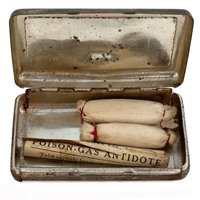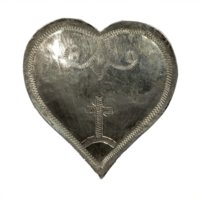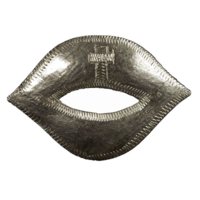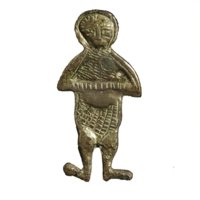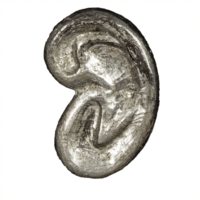Protecting the Self

The act of defending our bodies from harm is perhaps the first association made when thinking about protection. Humankind’s attempts to protect the self have resulted in the creation of a wide variety of items designed to shield a person from physical or spiritual harm.
Physical threats can range from illnesses weakening the body internally, to external attacks from fellow humans, animals and nature. The body can be protected through actively fighting a threat or the passive prevention of harm, for example by donning protective equipment.
Physical harm to the body is not the only threat we face; protection against spiritual harm is of just as much concern to many. Throughout time and across cultures, people have protected themselves from perceived evil with objects that are often prominent in daily life and passed down through generations. The nazar – a glass amulet depicting an eye on a blue background that wards off the Evil Eye – is one such object.
A rising concern in the digital age is the protection of our identities. Our personal data is under daily threat in the form of targeted advertisement, fraud and theft. While we have some control over our personal information, it has become increasingly difficult to track where this data is going and who has access to it. To limit this access, we can buy internet security, avoid actively giving out personal data and create safe passwords.
Gallery
Click on an image to view full size.

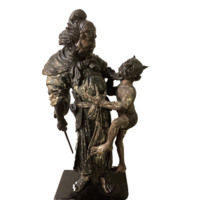
Statue of Shoki
1700-1800
Japan
In the Shinto religion, it is said that Shoki killed himself after his offer to serve the emperor as a physician was rejected because he was ugly. The emperor regretted his decision and made Shoki a doctor posthumously. In return, Shoki vowed to protect the emperor from evil spirits. This wooden statue depicts Shoki strangling a demonic creature. Statues of Shoki can be found in Japanese and Chinese homes and outside temples as protection against illness and evil spirits.
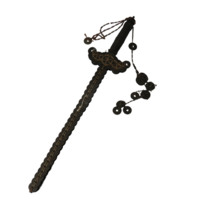
Taoist coin sword
1700-1800
China
To banish evil spirits, coins were strung together into the form of a sword. The sword was used in ceremonies to draw a spell onto paper with chicken blood; the sword then pierced the spell to kill a ghost. The copper coins gained strength after being used, which is why older coins are at its centre.
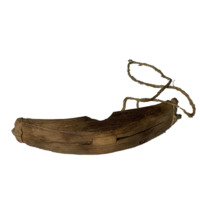
Inuit snow goggles
Early 1900s
Nunavut, Canada
The Inuit wore snow goggles during hunts to prevent snow blindness, which occurs when the sun reflects off snow and ice. The narrow slits reduce the amount of light that reaches the eye, preventing over-exposure. The goggles also shielded eyes from snowstorms during travels across the Canadian tundra.
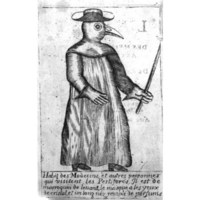
Sketch of a plague doctor
Early 1700s
Switzerland
The masks used by plague doctors were designed to protect physicians from the bubonic plague. They were thought to prevent infection from putrid air thanks to aromatic herbs and vinegar sponges placed in the beak. Despite their frequent association with the plague, there is no actual evidence for their use in Medieval Europe, and they would not have offered any protection since the bubonic plague was not airborne.
Poison gas antidote
1914-1919
London, England
This antidote, which possibly contains activated charcoal, is enclosed with instructions that read: ‘take capsule between thumb and first finger of each hand, press ends downwards to break in centre, inhale vapour’. Activated charcoal has protected people from poison since the 1800s and is still used today. Its porous structure has a negative electrical charge, so attracts positively charged toxins and gases and prevents the body from absorbing them.
“Google Trends” screenshot
10.04.2020
Google
The top searches for protection from the last 12 months highlight the importance we place on data protection. From online shopping to an accidental click on the advertisement in Candy Crush, our personal data is collected, stored and sold to the highest bidder. As our lives become more digital, information turns into currency, which invokes an increased desire for protection.
Illness amulets
1850-1940
Albania
Illness amulets (Tama) are votive offerings used in the Greek Orthodox Church. These metal plaques are often shaped into body parts to represent an illness that needs healing. Tama are typically hung on ribbons or poles and placed near the shrine of a saint. They are accompanied with a prayer to invoke healing.


